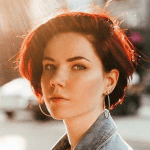How to Create Web Dashboards for IoT Devices
IoT devices are being integrated into all kinds of industries: home goods, automotive, healthcare, and public transport. No matter where you use IoT technology, you’ll need to control devices and gather valuable data. For this, you’ll need a single control center: a dashboard
What is an IoT dashboard?
An IoT dashboard is one of the most important elements in IoT app development. It’s a web-based software that allows you to control your ecosystem, get information from each device, and manage its operation. An IoT dashboard is basically an IoT control panel that can achieve many different goals for any business.
Benefits of IoT dashboards
Collect data from your devices
The primary goal of most IoT devices is to collect data. IoT dashboards allow you to review collected data both retrospectively and in real-time.
Enhance data
To make the most of your collected data, you can combine datasets to find correlations and program rule-based actions. Different locations can be subject to different external factors: temperature, pressure, speed, etc. Combine your data and analyze it as a whole to get the most accurate results.
Monitor processes remotely
Real-time IoT devices monitoring feature helps you know where your IoT devices are and what data they’re gathering. For example, IoT in healthcare is often connected with remote patient monitoring. Doctors can use devices to monitor vitals in real time without having to visit a patient in person.
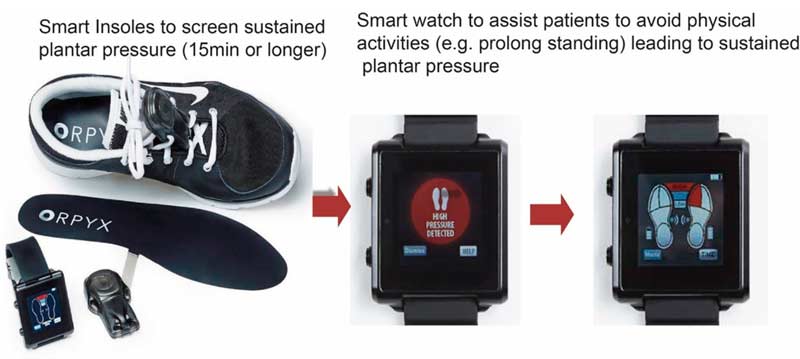
- Learn your customers’ behavior patterns. Based on behavior information, you can create personalized offers or change the way you interact with a customer. For example, some insurance companies gather data from cars and offer insurance policies based on whether a customer is prone to speeding.
- Let your customers enjoy reporting. Through an IoT device dashboard, you can not only see data yourself but share it with your customers. This feature will bring additional value to your software, making it stand out.
Things to consider before developing an IoT dashboard
Before we discuss all the ins and outs of creating an IoT dashboard, let’s talk about factors you need to consider during the planning stage.
User experience design
The main goal of an IoT dashboard is to present data in a meaningful way, so that a user can manage devices effectively based on this data. Complex IoT systems may have lots of data points for each device, and it’s important to organize it neatly so the user doesn’t get overwhelmed and confused about where to look for particular information.
When working on your UX design, step into your user’s shoes and think about what data is most important to them. This will allow you to build a hierarchy of data visualization. Make sure your IoT dashboard is customizable too, so that users can choose what data they’d like to see themselves.
Team structure
Building an IoT dashboard requires a whole team of IT specialists, meaning it can’t be done by just one developer you hire. A minimal team for IoT development comprises:
- a developer
- a business analyst
- a UI/UX designer
- a project manager
- a quality assurance specialist
The number of team members depends on your project’s size, deadline, and budget. For example, you can hire two developers to accelerate the process.
Hiring a dedicated team is the best option for IoT development. This allows you to get a team of professionals with experience working with each other, so you don’t have to spend time on their management and can focus on your business goals.
MVP functionality
In order to accelerate the development process and release your IoT product as soon as possible, you can build an MVP first. A minimum viable product allows you to release your product to the public and get real-world feedback to optimize your further development.
To launch an MVP, you need to prioritize features and leave all the blows and whistles in your backlog. By implementing the most important functionality first, you can save time and money significantly and spend it only on what matters to your users.
How to create a dashboard for your IoT application
As you can see, all of the goals a dashboard can help you achieve are connected with IoT device control and monitoring, data collection, management, and analysis. This requires a rather complex system. In this article, we’ll talk about how to set up such a system, discuss the necessary technology stack, and list the must-have features you need to consider to build an IoT dashboard.
An IoT dashboard is basically an IoT control panel that can achieve many different goals for any business
Here’s a step-by-step guide to building a dashboard for your IoT application.
Step 1. Choose a network
The complexity of IoT networks requires a specific architecture that consists of:
- Devices
- Gateways
- Data systems
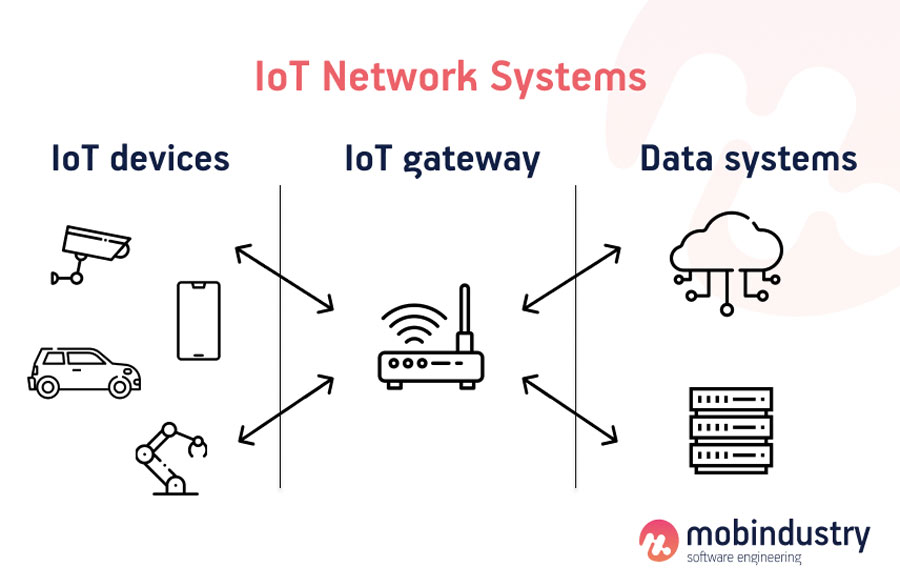
These layers connect with each other through the following channels:
- Device–device
- Device–gateway
- Gateway–database
- Database–database
All these connections require a network to support them. The type of network you need will depend on your ecosystem, its scale, and your goals. These are the most common types of networks for IoT.
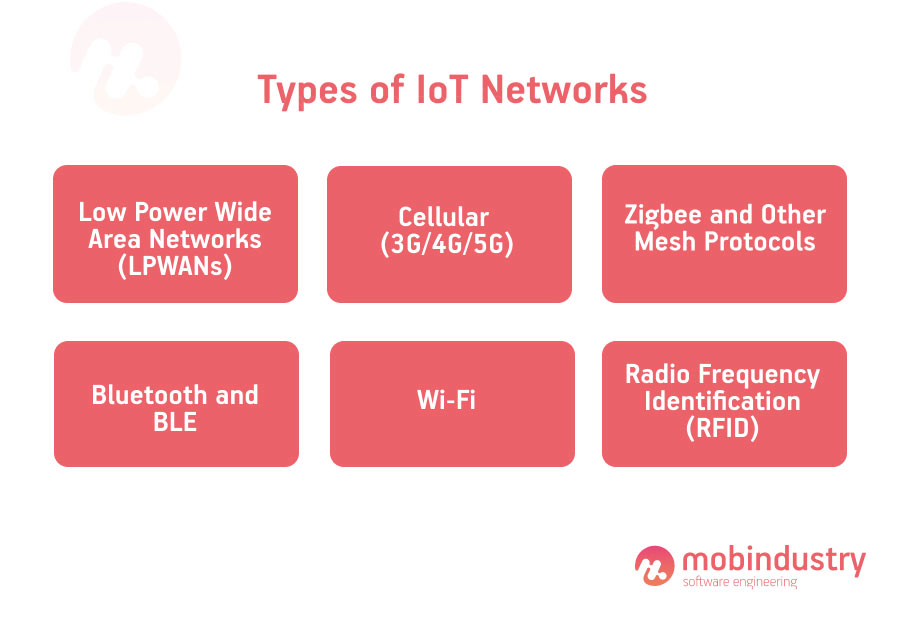
- A nanonetwork is your choice if you’re working with microchips and small sensors that gather and compute data, then send it to a database. Nanonetworks are used in military, agricultural, biometric, and other applications.
- NFC (near-field communication) is created for connecting devices that are close to each other (within four centimeters). NFC is commonly used for contactless payments and security cards.
- A BAN (body area network) is used in smart clothing or sensors that are embedded under the skin.
- A PAN (personal area network) works within one or two rooms.
- A LAN (local area network) connects devices within one building.
- A CAN (corporate area network) unites devices within a specified area like a hospital, university, or plant.
- A MAN (metropolitan area network) is associated with smart cities and can cover either one small city or a separate area in a city.
- A WAN (wide area network) covers more than one city and can unite MANs and LANs.
Step 2. Choose a protocol
The protocols connect devices to each other and to the applications to which they send data.
MQTT (Message Queuing Telemetry Transport) is the most common protocol that allows for the transmission of data from devices to applications and middleware through three components: subscribers, publishers, and brokers. A subscriber receives data from the publisher that collects it. MQTT is suitable for small, low-power, and simple devices.
DDS (Data Distribution Services) are great for more complex IoT monitoring systems, as they enable real-time communication between members of your ecosystem. They’re also suitable for cloud computing.
AMQP (Advanced Message Queuing Protocol) is a protocol for exchanging messages between middleware and an application.
Bluetooth is a well-known technology present in most consumer IoT devices, from smartphones to smart clothing and speakers. Bluetooth provides effective communication between devices within a short range.
Choose between a platform and a dashboard
The terms platform and dashboard in IoT are often used interchangeably. In this article, I’ll refer to third-party IoT services as platforms and custom-made administrative software as a dashboard.
A dashboard is often viewed as the most basic software for managing IoT devices and receiving data from them. Platforms are often more advanced, allowing you to run tests, store data, deploy updates, and so on.
Both a platform and a dashboard can be advanced (with a lot of capabilities) or really simple (allowing you only to view data and manage it at a basic level)
However, when it comes to third-party platforms, they often contain only an IoT analytics dashboard: an administrative center where you can see all the information from your devices and manage them.
So both a platform and a dashboard can be advanced (with a lot of capabilities) or really simple (allowing you only to view data and manage it at a basic level). The only difference, in this case, is whether you choose to develop your own dashboard or build your service on a third-party platform. Let’s look at the pros and cons of each option so you can choose the best IoT dashboard for your solution.
Custom IoT dashboard
A custom web IoT dashboard is a web-based software that you build from scratch and power with the best technologies for your IoT service. The main downside of a custom dashboard is its cost. Building a dashboard requires a complex development process, and the more features you want, the more complex the development will be.
With a custom IoT dashboard app you can always be sure that your IoT devices will be compatible with your whole system
Building a dashboard from scratch will require strong skills from your web developer, as they’ll need to select proper technologies, design the architecture, and pair your devices with the backend and the dashboard.
However, with a custom IoT dashboard app, you can always be sure that your IoT devices will be compatible with your whole system. You’ll be able to implement features specific to your business and customize the dashboard according to your needs. This will make your operations more effective and save you money in the long run.
- Custom features
- Your own servers
- Independence from another business’s policies and pricing
- Data safety
- Can change functionality on demand
- Significant investment, especially at the start
- Need a software support team
Off-the-shelf IoT platform
You’ll probably pay a monthly or yearly fee for a ready IoT platform. These platforms are convenient, as you don’t have to wait for the software to be developed. However, you’ll be fully dependent on how other developers have created this software.
Usually, off-the-shelf platforms aren’t very customizable. It will be hard or impossible to change anything feature-wise. Also, you’ll need to pay each month or year, and in the long run, this may cost you more than if you created your own dashboard in the first place.
If you choose a ready solution, be sure to choose wisely. Transitioning to another platform will require much time and money.
- Instant access
- Many advanced features (depending on the platform)
- Constant support
- Risk of data leaks
- Lack of control over features and connections
- Constant payments
- Low scalability and customizability
If you choose a ready solution, be sure to choose wisely. Transitioning to another platform will require much time and money
No matter which platform you choose, you’ll need your own set of components for your dashboard. I’ve prepared a list of the most popular and common IoT dashboard components. You can implement all of them or choose just the basic set of components depending on your technical and business needs.
The most popular IoT platforms
Google Cloud Platform
This is a paid IoT platform that has everything you need to manage your IoT infrastructure, from device lifecycle management and predictive maintenance to real-time device tracking and management solutions for systems as big as smart cities.
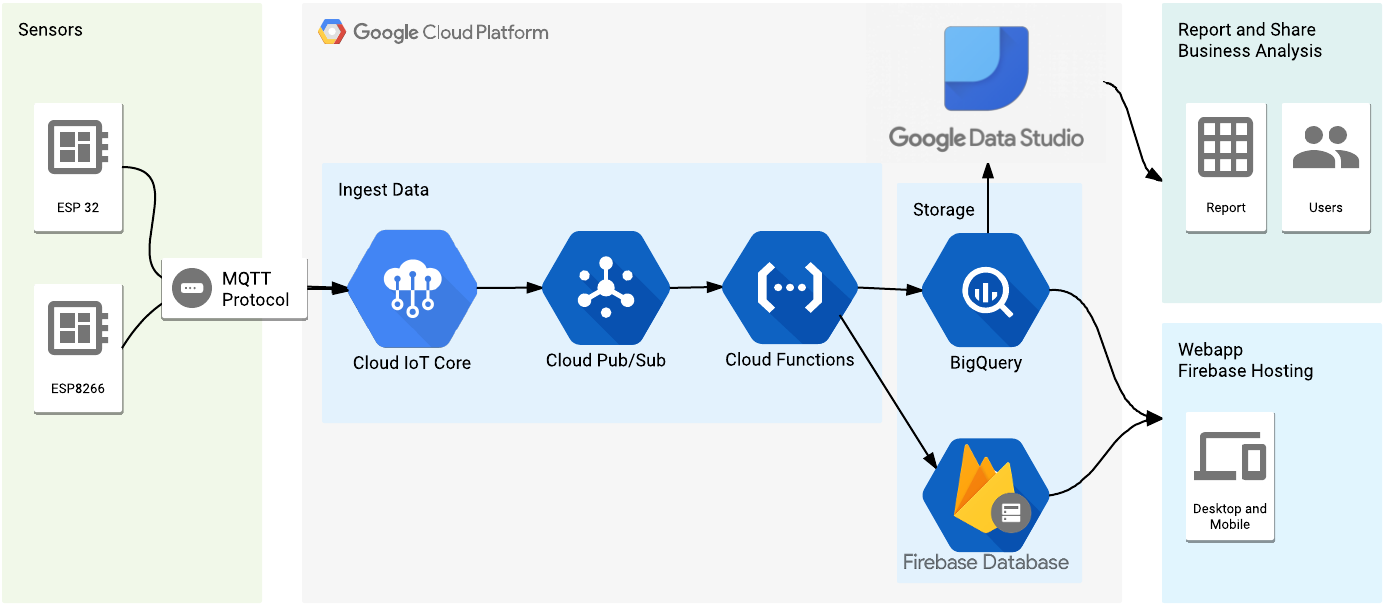
Google Cloud platform offers:
- machine learning and artificial intelligence functionality
- real-time business insights
- support for a wide range of operating systems and devices
- location intelligence
The prices for using Google Cloud for IoT start at $1758 per month.
OpenRemote
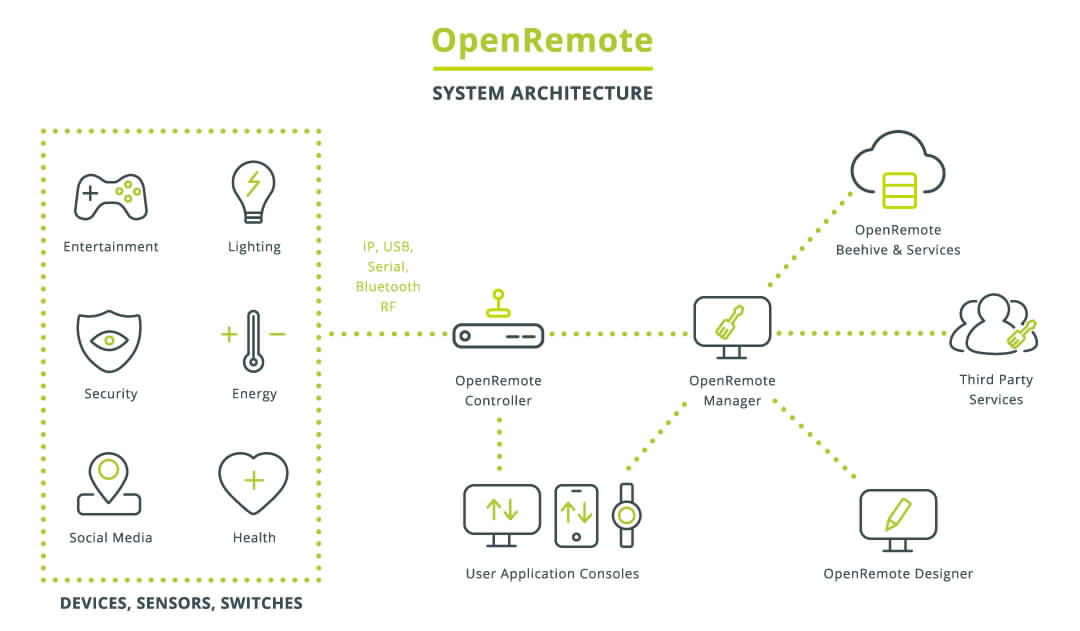
Unlike the previous platform, OpenRemote is free and open source. It offers fewer functions but is still sufficient to run an IoT ecosystem. OpenRemote uses multiple protocols to connect your devices, and offers custom dashboards and a rules engine you can use to set up the scenarios for your IoT devices. Here are the main features of OpenRemote:
- Protocols for IoT device connection that include HTTP, TCP, Websocket, MQTT, UDP, KNX, Modbus
- Rules engine with a Flow editor
- Customizable dashboard for IoT device management
- Mobile app for both Android and iOS with push notifications and geofencing functionality
Particle
Particle provides multiple products for various systems depending on their connectivity, like Cellular, Wi-Fi and Mesh. For IoT management, it offers Device OS, Device Cloud, IoT Rules Engine, and more.
Particle is easy to grasp, and it offers a reliable infrastructure that can be integrated with other platforms like Google Cloud or Microsoft Azure. Through REST API, it can be integrated with any database.
Particle is an all-in-one solution that helps you connect your hardware, and software and take care of the connectivity all in one place.
The cost depends on a type of connection:
- $25 per device for Wi-Fi
- $49 per device for Cellular
- $15 per device for Mesh
ThingWorx
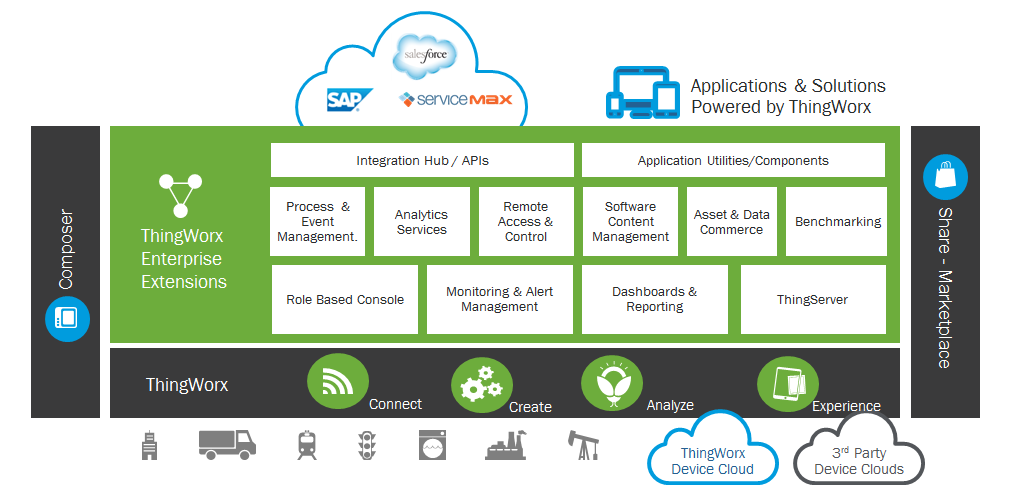
If you need an IoT platform for your industrial solution, ThingWorx is for you. It allows you to create an industrial IoT app without too much coding, and provides a flexible solution for any environment. Its core features include:
- role-based control and access
- data analysis
- accessibility from on-premise web servers, off-premise cloud apps and hybrid environments
- improved compliance
ThingWorx’s pricing is individual, so you need to contact them for details.
Amazon AWS IoT Core
An IoT platform from Amazon is a powerful solution that will allow you to build a cloud IoT infrastructure of any complexity. It supports different connection types, including HTTP, MQTT, and lightweight communication protocols.
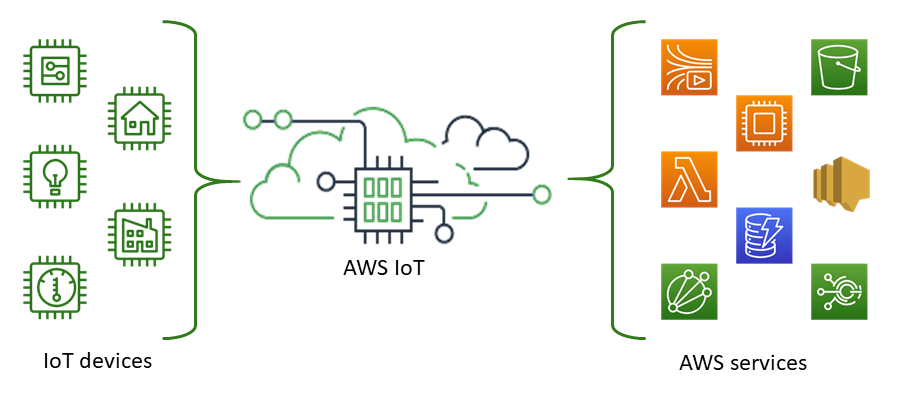
The main AWS IoT Core features include:
- powerful message processing
- communication between applications that aren’t connected
- integration with other AWS services like Amazon Kinesis, QuickSight, Lambda, etc.
- advanced device management
This platform offers a free 12-month trial; after that, the pricing is individual and based on your business needs.
Must-have IoT dashboard components
Telemetry data collection
Data collection is one of the primary goals of any IoT device. Your backend is what helps you store and view information in the form of reports. Telemetry data includes:
- Temperature
- Humidity
- Motion
- GPS coordinates
- Proximity
- Pressure
- Air and water quality
- Chemical composition
- Acceleration
- Voltage/current/energy
After your sensors get all this data and transfer it to your database, you need to visualize it. There are some IoT monitoring open-source solutions that can allow you to do that easily.
Note that an industrial IoT dashboard might need more customization, and it may be hard to find a ready solution.
Data visualization
Humans typically have visual perception, so a dashboard should visualize information from IoT devices. There are lots of ways to do that:
- Line graphs
- Gauges
- Geographical maps
- Bar charts
- Pie charts
- Histograms
- Heat maps
Use these visualization methods to represent your data in the best way possible. To make your service outstanding, share some of this information with your users in an equally clear way after you create IoT dashboard for your own needs.
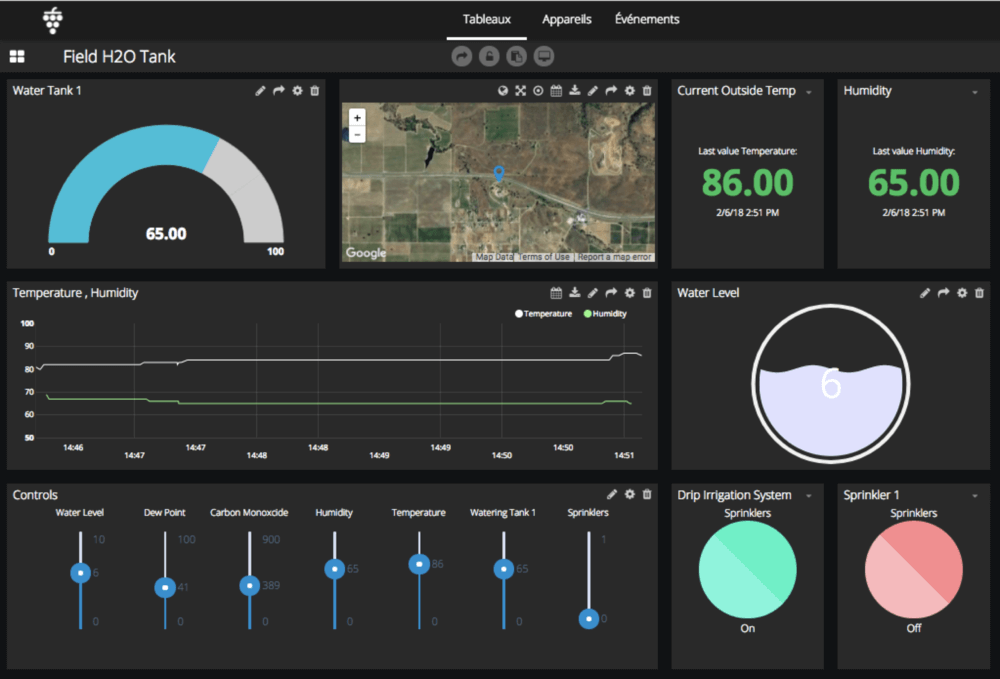
Real-time data processing
For most IoT-based products (for example, in healthcare and smart car applications), it’s vital to get data in real time. For this, data should be sent and received dynamically. This requires several things:
- Dynamic database
- Stable connection
- Advanced development skills and lots of resources
Data storage
IoT devices are usually lightweight, so they don’t have much storage capacity. All the data they gather they almost immediately send to the server. And though these data points may appear to be collected slowly, over time there will be so many of them that you’ll need sufficient storage to keep them all.
Your database should be able to quickly retrieve all data so you can see changes according to timestamps
Moreover, your database should be able to quickly retrieve all data so you can see changes according to timestamps. A timestamp shows when a piece of data was created. This parameter is attributed to data either by a device or by backend software. Later, when you need information from a certain timeframe, your software can retrieve it according to the timestamps.
IoT rules
You can automate most processes with the help of IoT devices. When an IoT device detects a change with its sensor, it can send data to the server and initiate changes in how your machines work. For example, if a device detects a critical change in pressure, it can trigger certain actions in the machine to relieve that pressure.
Rule logic is what makes your system smart and self-managing.
Alarm management
This feature is connected with rule logic: if a sensor detects some behavior, hazard, or drastic deviation from the usual measurements, it can set off an alarm and warn you. You can set rules for alarms and manage them according to your business needs.
Data analytics
To make IoT technology more effective for your business, you should not only get data from all your IoT devices but quickly derive valuable insights from it. Instead of looking at endless lists of data points, let the system provide you with conclusions so you can take action faster.
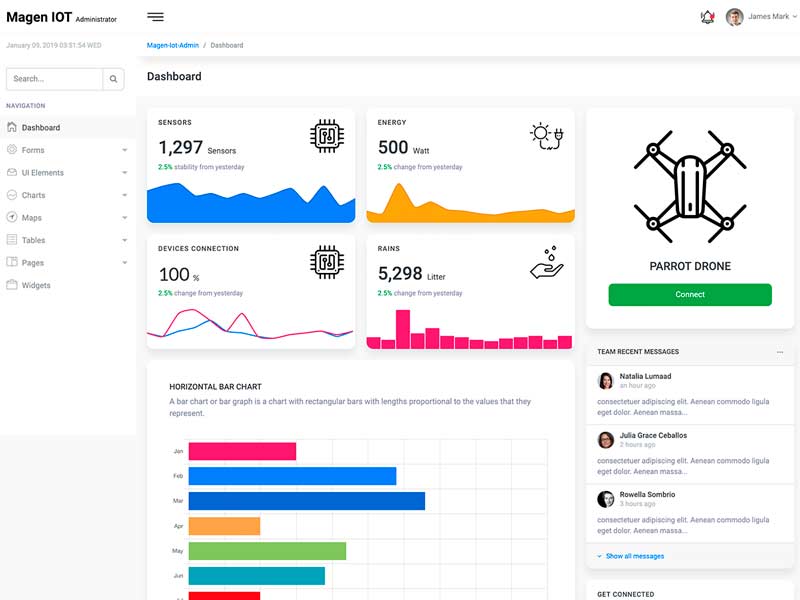
Basic IoT analytics will show you minimum, maximum, and average data readings. More advanced analytics will allow you to learn about trends, predict failures and risks, etc.
Device management
You can manage your devices through a dashboard: roll out updates, turn devices on or off, change modes, and so on. You can also send requests and commands to your devices and monitor their work and performance.
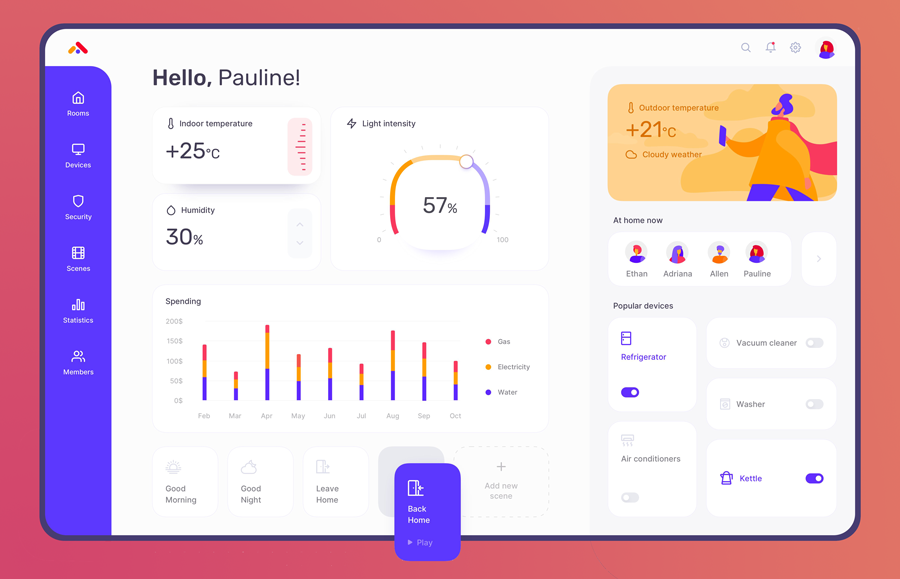
Asset management
If your system’s main goal is to manage your assets, a dashboard is the primary place where you’ll be able to do that. With a dashboard, you can register and manage your assets and see where exactly they are. You can also group your assets, categorize them, and so on.
How we created an IoT dashboard for a scooter-sharing startup
One of Mobindustry clients is a scooter-sharing startup that needed a full-cycle development of a scooter sharing platform. One of its elements is an IoT dashboard, that gives administrators an opportunity to manage users, see the locations of each scooter, manage damage reports, track the battery charge, see the number of rents and more.

Our client needed a dashborad that would cover all management issues in all cities where they provide services. To help our client grow their business and make decisions based on hard data, we added analytics that show a number of users, rentals, and also financial data like net earnings per day.

Technology stack for an IoT platform
Currently, there are many solutions and technologies for building IoT apps. You can choose to integrate your IoT devices with platforms from IBM, Microsoft, Amazon, Google, etc. Here are technologies you can use:
| Company | Technologies and platforms |
| Google Cloud + IoT Core | |
| Microsoft | Microsoft Azure + Power BI |
| IBM | IBM Cloud + Watson IoT platform |
| Amazon | AWS + AWS IoT Platform |
When it comes to languages, you can build your IoT dashboard using Java, C, Python, Javascript, PHP and others. We usually choose Django and Angular frameworks for IoT projects, however, you can use more specific frameworks that were created just for IoT development or go with Bootstrap to build a dashboard.
When it comes to languages, you can build your IoT dashboard using Java, C, Python, Javascript, PHP and others
Conclusion
An IoT dashboard is a necessary part of your IoT software. It allows you to gather, analyze, and visualize information that’s vital for your customers and your business. An IoT dashboard can be very basic, only displaying and visualizing your data. This option is great for simple services or MVPs.
A more complex dashboard will allow you to manage your devices, deliver updates to them, get valuable insights from your data, and more.
If you plan to develop a simple IoT service, you can choose an off-the-shelf IoT platform that will instantly provide you access to all its functionality. However, if you plan to scale your business and require more customization, it’s best to develop your own dashboard.
At Mobindustry, we work with IoT devices and build reliable dashboards with business goals in mind. Contact us if you have any questions about the technical stack for or business applications of an IoT dashboard.

